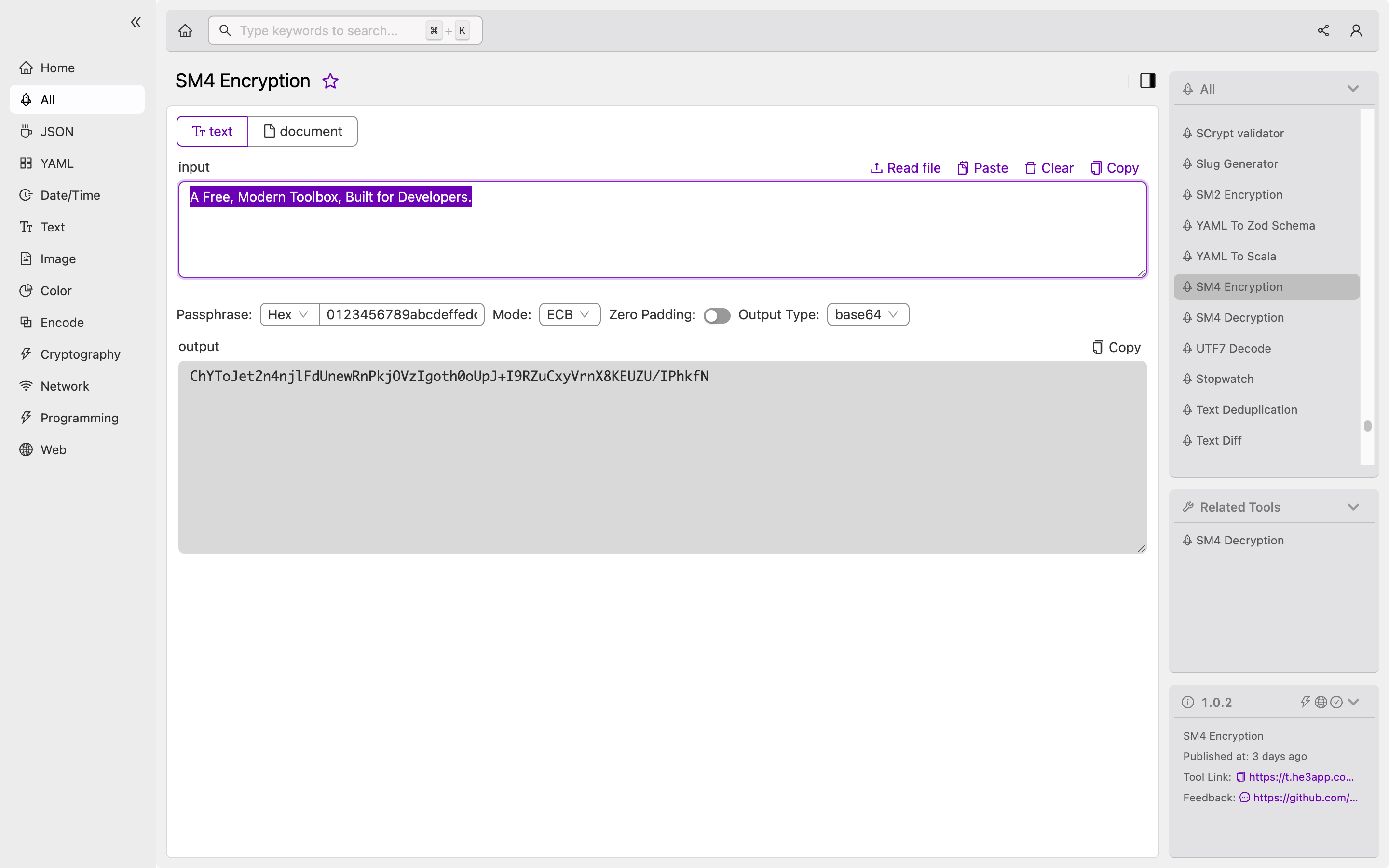Understanding SM4 Encryption: The Ultimate Guide
Ensuring that data is well-protected is one of the most important aspects of software applications. Encryption is a widely-used method for protecting data, and SM4 Encryption is an essential tool for developers. In this guide, we will explore the concepts of SM4 Encryption, how it works, its key features, and scenarios where developers can use it.
What is SM4 Encryption?
SM4 Encryption is a symmetric key block cipher algorithm developed by the Chinese National Cryptography Administration (CNCA) in 2007. It is a standard for encryption and decryption of electronic data in China and is widely used by developers around the world. SM4 Encryption’s security has been extensively tested and assessed, and it meets the highest international security standards.
How does SM4 Encryption work?
SM4 Encryption is a symmetric key algorithm, which means that the same key is used for both encryption and decryption. It takes a 128-bit plaintext input, breaks it into 32-bit sub-blocks, and processes them in a fixed number of rounds. Each round consists of four operations: substitution, permutation, linear transformation, and key addition. SM4 Encryption also uses a key expansion algorithm to generate different round keys for each round to enhance security.
Sample Code
Here’s a sample code for implementing SM4 Encryption in Python using the PyCryptodome library:
from Crypto.Cipher import AES
plaintext = b'This is a sample plaintext'
key = b'This is a secret key'
cipher = AES.new(key, AES.MODE_ECB)
ciphertext = cipher.encrypt(plaintext)
print('Ciphertext:', ciphertext.hex())Scenarios where developers can use SM4 Encryption
SM4 Encryption is an essential tool for developers working on applications that need to protect sensitive information. Developers can use SM4 Encryption in various scenarios such as:
- Protecting passwords and other sensitive data
- Securing financial transactions
- Securing communication channels
- Protecting confidential business information
- Securing data in databases
Key Features
Some of the key features of SM4 Encryption are:
| Feature | Description |
|---|---|
| High Security | SM4 Encryption meets the highest international security standards and has withstood extensive testing and analysis. |
| Speed | SM4 Encryption is fast and efficient, making it ideal for applications that require quick data processing. |
| Symmetric Key Algorithm | SM4 Encryption uses the same key for both encryption and decryption, making it simple to implement. |
| Key Expansion Algorithm | SM4 Encryption generates different round keys for each round, enhancing security. |
Misconceptions and FAQs
Is SM4 Encryption only used in China?
No, SM4 Encryption is not only used in China. It is a widely-used cipher algorithm that has gained popularity worldwide due to its high level of security.
Is SM4 Encryption vulnerable to attacks?
No, SM4 Encryption is not vulnerable to attacks. It has been extensively tested and assessed and meets the highest international security standards.
Conclusion
SM4 Encryption is an essential tool for developers working on applications that need to protect sensitive information. It is fast, efficient, and provides high-security protection for various scenarios. Developers can use SM4 Encryption to secure passwords, financial transactions, communication channels, databases, and confidential business information. You can easily use SM4 Encryption tool in He3 Toolbox (https://t.he3app.com?8jnl ) to make your data more secure.

